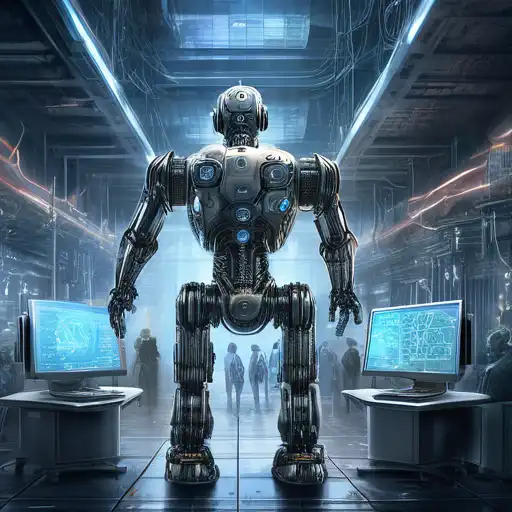Introduction to AI and Machine Learning
In the rapidly evolving world of technology, Artificial Intelligence (AI) and Machine Learning (ML) stand out as two of the most groundbreaking advancements. While often used interchangeably, these terms represent distinct concepts with unique applications and implications. This article delves into a comparative study of AI and ML, shedding light on their differences, similarities, and how they are shaping the future of industries worldwide.
Understanding Artificial Intelligence
AI is a broad field of computer science focused on creating systems capable of performing tasks that typically require human intelligence. These tasks include problem-solving, recognizing speech, and making decisions. AI can be categorized into two types: Narrow AI, which is designed for specific tasks, and General AI, which possesses the ability to perform any intellectual task that a human can.
Understanding Machine Learning
Machine Learning, a subset of AI, involves the development of algorithms that allow computers to learn from and make predictions based on data. Unlike traditional programming, ML systems improve their performance as they are exposed to more data over time. ML is further divided into supervised learning, unsupervised learning, and reinforcement learning, each serving different purposes in data analysis and pattern recognition.
Key Differences Between AI and Machine Learning
While AI aims to simulate human intelligence across a wide range of tasks, ML focuses specifically on enabling machines to learn from data. Here are some of the key differences:
- Scope: AI encompasses a wider range of technologies and applications, whereas ML is specifically concerned with data-driven learning.
- Dependency: AI systems can operate without ML, but ML is a critical component of many AI applications.
- Flexibility: AI can be rule-based and not learn over time, while ML systems inherently improve with more data.
How AI and Machine Learning Work Together
Despite their differences, AI and ML often work hand in hand to create sophisticated systems. For example, AI-powered chatbots use ML to understand and respond to user queries more effectively over time. Similarly, recommendation engines on streaming platforms leverage ML algorithms within an AI framework to personalize content for users.
Applications of AI and Machine Learning
Both AI and ML have transformative applications across various sectors:
- Healthcare: From diagnosing diseases to personalizing treatment plans.
- Finance: For fraud detection and algorithmic trading.
- Retail: Enhancing customer experience through personalized recommendations.
- Automotive: Powering self-driving cars with AI and ML technologies.
Conclusion
The comparative study of AI and Machine Learning reveals a symbiotic relationship that drives innovation across multiple domains. Understanding their differences and how they complement each other is crucial for leveraging their full potential. As these technologies continue to evolve, they promise to unlock new possibilities and redefine what machines can achieve.
For more insights into the latest tech trends, explore our Tech Trends section.
